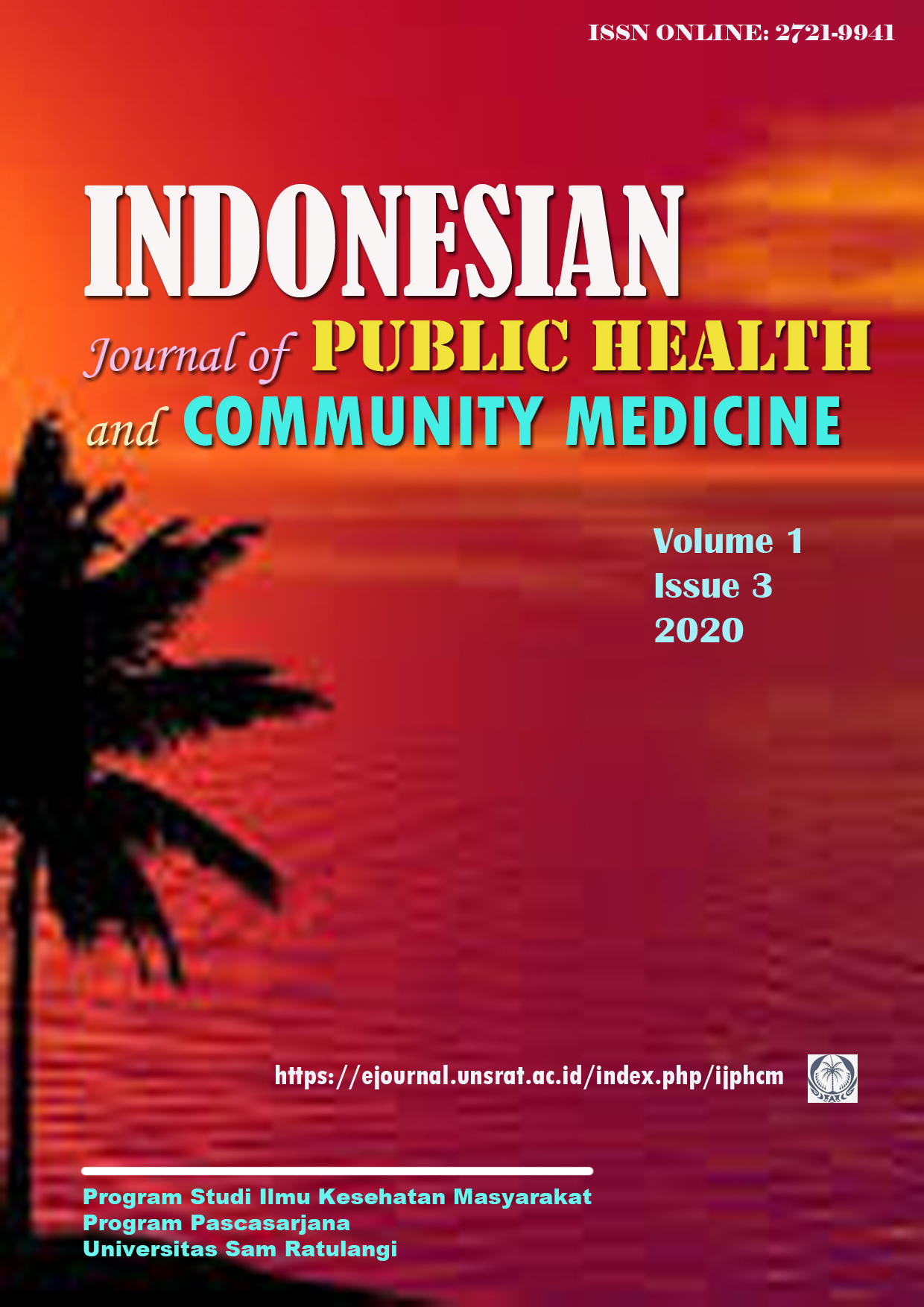Emergency Respond Time, Waktu Tunggu, Waktu Tunggu Rawat Jalan dan Kekerasan pada Perawat Rumah Sakit
DOI:
https://doi.org/10.35801/ijphcm.1.3.2020.29867Keywords:
Waktu tunggu, Emergency Respond Time, Kekerasan PerawatAbstract
Background: Response time is the speed in the treatment of patients, calculated since the patient comes to a good handling for the patient is ≤ 5 minutes. Violence is an expression made by individuals or groups both physically and verbally, reflecting aggressive actions and attacks on freedom or dignity. The study aims to determine the Emergency Response Time And Outpatient Waiting Time With The Violence On The Nurses Of The General Hospital District of Luwuk Banggai. Method: This research was conducted in August to September in 2019 with a Respoden in research was a Nurse who works in the Public Hospital Of Luwuk area a number of 120 nurses. Research subject were 60 respondents. Variables in this study were response time, outpatient waiting time and behavior of violence. Data analysis using Chi Square. Result: the effectiveness of response time handling patterns especially in RSUD Luwuk Banggai 55.00% of respondents said that it was good enough. The results of the research prove that the handling of outpatient waiting time at the Luwuk Banggai District General Hospital 53.33% of respondents stated that it was very adequate forms of physical violence that had been done as many as 63.34% of respondents gave answers that physical violence was carried out including damaging Hospital Buildings, pelting glass, chairs, benches and various other equipment. Conclusion: The conclusion of this study is relationship between Emergency Response Time with Violent Behavior for Nurses is to maximize the handling of response time with ABCD procedures. This can also be achieved by improving human resources facilities and infrastructure and emergency room management or outpatient, hospital. In the relationship between waiting time Outpatient with Behavior Quality of service includes dimensions, namely: Determination of service time,Ease in meeting the needs of a patient,Convenience and hospitality,Aspects of Human Resources,Paying attention and others.References
AlBashtawy, M., & Aljezawi, M. E. (2016). Emergency nurses' perspective of workplace violence in Jordanian hospitals: A national survey. International emergency nursing, 24, 61-65.
Andayani. 2001. Bentuk Kekerasan pada Anak yang mengalami Stress. Jakarta.: Sinar Media
Azwar, A. 2010. Pengantar Administrasi Kesehatan Edisi III. Tangerang: Binarupa Aksara.
Baydin, A., & Erenler, A. K. (2014). Workplace violence in emergency department and its effects on emergency staff. Int J Emerg Ment Health, 16(2), 288-90.
Caroli. 2013. Proses penanganan yang efektif di Unit Gawat Darurat, Barkah mulia Jakarta.
Chawazi. 2001. Psikologi Untuk Keperawatan EGC. Jakarata
Dasale. 2012. Pola dan Bentuk kekerasan pada Anak. Penerbit Yayasan Bintan Jakarta.
Herlambang, S. 2016. Manajemen Pelayan Kesehatan Rumah Sakit. Yogyakarta: Gosyen Publishing.
Kartikawati. 2013. Dokumen Keperawatan : suatu pendekatan proses Keperawatan. Jakarta. Penerbit: EGC
Keliat 2009. Posttraumatic Stress Symptomatology Among Emergency Department Workers Following Workplace Aggeression. Workpalce Health & Safety.
Krisanty. 2009. Sistem Penatalaksanan Kesehatan di Ruang Gawat Darurat. Penerbit Usaha Nasional Jakarta.
Pratiwi, H.I. 2014. Kepuasan Pasien Rawat Jalan Berdasarkan Metode Importance-Performance di Rumah Sakit Gotong Royong Semampir. Skripsi. Universitas Katolik Widya Mandala Surabaya.
Utami, D.A. 2013. Hubungan Waktu Tunggu Pendaftaran deangan Kepuasan Pasienpada tempat Pendaftaran Pasien Rawat Jalan (TPPRJ) RSUD Sukoharjo. Universitas Muhamadiah Surakata.
Widodo, E. 2015 Auastralia Triage Scale, Australia :Emergency Depertemen.

